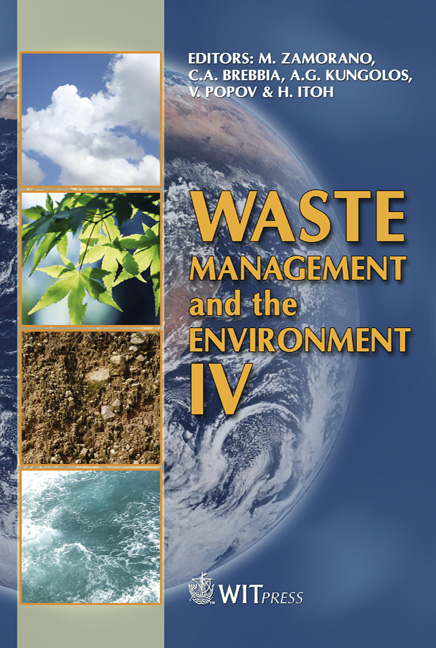Effect Of High Temperature On Immobilization Of Heavy Metals In Concrete With An Addition Of Galvanic Sludge
Price
Free (open access)
Transaction
Volume
109
Pages
9
Page Range
331 - 339
Published
2008
Size
800 kb
Paper DOI
10.2495/WM080351
Copyright
WIT Press
Author(s)
A. Król
Abstract
The paper presents the results of research devoted to the stability of concretes based on various cements, which contain added galvanic sludge content in the circumstances of various temperature levels (200°C, 400°C, 600°C). The mechanical properties of stabilizing concretes under various temperatures are presented. The particular focus was placed on the immobilization of heavy metals following the process of roasting concrete specimens under high temperatures. Keywords: concrete, leaching, heavy metals, high temperature conditions, galvanic sludge. 1 Introduction The neutralization of waste containing heavy metals constitutes a complex task since the selection of an appropriate method of neutralization should secure the irreversible deactivation of heavy metals. The neutralization of the waste applies the conventional methods (most frequently combustion). However, the application of such methods results in the generation of post-processing waste (e.g. fly ash or slag), which still contains heavy metals. Galvanic sewage sludge originating from the plants in the branch of metal surface work constitutes, in the majority of cases, quite hazardous waste. As a result of huge heavy metals content its disposal is difficult. One of the methods for neutralizing this type of sludge consists of solidifying it in materials based on mineral binders.
Keywords
concrete, leaching, heavy metals, high temperature conditions, galvanic sludge.





